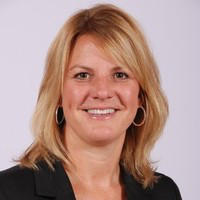10 analytics data points for measuring the effectiveness of wellness programs
The industrial supply company W. W. Grainger collects data even before activating well-being program

One of the most vital tools an organization can use to improve its wellness program efforts is also perhaps its least flashy: data. But experts and successful organizations can prove that analytics positively impact employee well-being programs, helping them meet goals and increase their ROI.
W.W. Grainger, a Fortune 500 industrial-supply company headquartered in Lake Forest, Illinois, prides itself on keeping the world working. Maintaining employee health and happiness is essential to the mission. It uses a four-pronged well-being program to make it happen, offering physical, emotional and financial-wellness benefits.

“What we’ve done at Grainger is started a couple of things as a pilot to see how it works before rolling it out more broadly,” says Lisa Thompson, director of benefits.
Grainger uses analytics to understand a program’s impact before recommending a full rollout to workers. This method allows them to tweak issues and test drive the vendor’s solutions before fully investing in a program.
Paula Allen is the global leader and senior vice president of research for LifeWorks, an HR services and technology company. Allen believes measuring data should be tailored to an organization’s unique demands.
However, all program measuring can be broken down into three main categories to get the most leverage from the data.
Process measures
Determining how the program will run is necessary before how it’s measured can be decided.
“It might sound silly, but that happens a lot,” says Allen. “You have a program in, and maybe over time it’s not functioning the way it should be. It ends up being watered down, and you can’t evaluate that because you’re evaluating something that’s different from what you intended.”
Setting up these before and after measures, to include data collection points, should be done beforehand.
“Your planning and evaluation have to be done all at the same time,” says Allen.
Metrics may include:
- Usage/engagement
- Feedback (qualitative data)
- Perceived value
Impact measures
The program’s impact should be measured with consideration for goals and outcomes.
“If one of your goals in your physical-health program is to get people to walk more steps, then are people walking more steps?” says Allen. “If your program is to reduce blood pressure, is your blood pressure reducing? Are your people losing weight?”
Metrics may include:
- Weight
- Claims
- Diabetes rates
- Mental health/stress/burnout
- ER visits
Outcome measures
The final measurements should indicate the outcome of the program’s efforts – positive, negative, or somewhere in between. The ultimate value of a program must meet organizational needs.
“Do you see absence reducing, turnover reducing, productivity increasing?” says Allen.
- Satisfaction with the company/loyalty/morale
- Sick days/absenteeism/presenteeism
- Productivity
- Retention
Getting started
Cari Wilkins is vice president of analytics at Alight Solutions, a cloud-based business solutions company in Illinois. She coaches clients on how best to use data to improve business outcomes.
Wilkins says organizations tend not to measure because it can be challenging.

“There are some industry statistics out there that say 80% of the work that needs to happen in the analytics and measurement space actually starts with getting the data, cleaning the data to make sure it’s good, and getting it all in a space so that then you can actually do cool stuff with it,” says Wilkins. “If you don’t have that infrastructure to create trust in data, it’s a hard thing to do.”
Even when it feels overwhelming, getting that infrastructure in place can be as easy as putting one foot in front of the other, says Wilkins.
“Start bringing data into your ongoing business routines,” says Wilkins. She suggests starting with just one metric at a meeting, getting traction on the metric and paying attention to trends. Then add more.
Grainger’s Thompson says metrics help her justify the programs she brings to the C-Suite table.
Grainger tracks ER visits, C-section rates, diabetes rates, tobacco usage and more to determine its baseline costs per employee. They’re adding new well-being programs to encourage those numbers to go down, such as a telemedicine benefit that saves employees time and money.
A measurement scorecard tracks participation, with placeholders for data yet collected.
“For example, we have a placeholder for what the telehealth utilization will look like this year, and then we’ll also be tracking what the effect was on our overall medical claims based on the uptick to telehealth,” says Thompson.
In an April pilot program, Grainger offered a virtual physical therapy program to a portion of its workforce. It measured a 46% reduction in pain after completing six weeks of the program. The likelihood of surgery went down by 30% for all users, while 57% of back pain sufferers avoided surgery.
Deemed a success, the company plans to expand the program to a larger population in January.
Having the infrastructure in place beforehand allowed Grainger to determine its program’s success quickly.
“It’s only until we’re able to try the solutions and see the results and see the measurement that we can determine that it’s a solution that makes sense for us to adopt,” says Thompson.
Wilkins says data is a process, but it’s hard to make a pivot if you don’t use it.
“We start trying to make decisions really quickly and so you go with gut feel,” says Wilkins. “When you go with gut feel, you are leveraging your prior experience, which may be limited. You could be introducing unconscious bias. So, it’s really when you get down to using the data that you can think about things differently and ultimately drive different kinds of outcomes.”
Part of our collection of Top Reads of 2021.
COMMENT
Ragan.com Daily Headlines
RECOMMENDED READING
Tags: Cari Wilkins, LifeWorks, Lisa Thompson, Paula Allen, wellness programs

